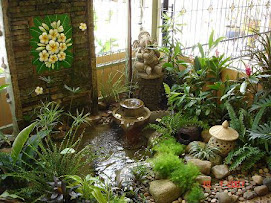Gardening Basics: Do You Know Your Garden Zone? by Glenn Cutforth
When starting out as a gardener, there are many many things you don't as yet know. In fact, quite often you might not even realize what you don't know, which means they may not be a problem at the beginning. However, as your experience grows and you become anxious to try out new garden styles, various flowers, plants or shrubs, you'll realize you're going to have to start learning some gardening basics.
For instance, it's important to know in which garden zone you live in. In the United States -- and most parts of the world -- there are garden zones assigned, which makes it a somewhat easier to understand which types of flowers, plants, trees and shrubs grow well in your zone. These zones are separated based on how much heat an area gets, and when the first and last frost of each year take place.
Other factors contribute to the success or failure of growing flowers and other plants, however, including how much natural rain falls, the length of sunlight throughout the day, as well as the types of soils found in the area.
Due to these other factors, garden zones are just a baseline to get you started, but you may discover that some plants you've tried to grow may not always act the way you expect them to in your gardening zone. This is due to the differences within the same zone, and will depend on where you live. Each zone stretches across the country from the east to west coasts, with the lower zones being farther north, and the higher zones being south.
The same zone on the east coast is likely going to be slightly different than the desert southwest mainly because of differences in sun strength and the level of humidity. In addition, there can also be substantial differences in the types of soil naturally present in each area. Thus, while all plants are marked for which zones they'll grow in and how much sun they require, the same plant may perform quite differently in different parts of the country even if it's the same zone.
Here's a good general rule: if you can buy a plant or flower at your local garden center, it's likely to grow with relative success in your area.
It may be best to try and start with small seedling plants and then experiment with them in different locations. You may discover that the your first year planting pansies, for instance, they'll die quickly because they didn't appear to like the full sun location where they were planted. The following year, if you try another spot with less strong sunlight for so many hours of the day, they could thrive and grow much better.
Meanwhile, you may discover that Vincas grow and thrive in the hottest places in your yard, no matter how many hours the sun beats down on them.
If you're interested in finding out which gardening zone you live in, check around on the Internet, or ask at your local garden center or nursery. If you live at the edge of two zones, the good news is that you'll have many more plant varieties to experiment with in your garden because often you'll do well with plants that can grow well in both zones.
About the Author
Glenn Cutforth is a writer, graphic designer and publisher of quality eBooks at Maxx Publishing http://www.MaxxPublishing.com. If you're interested in getting started with your own Garden, visit his website Lawn and Garden Magic at http://www.LawnandGardenMagic.com, where you'll find a wealth of information, tips and resources.
thank:http://www.goarticles.com/



No comments:
Post a Comment